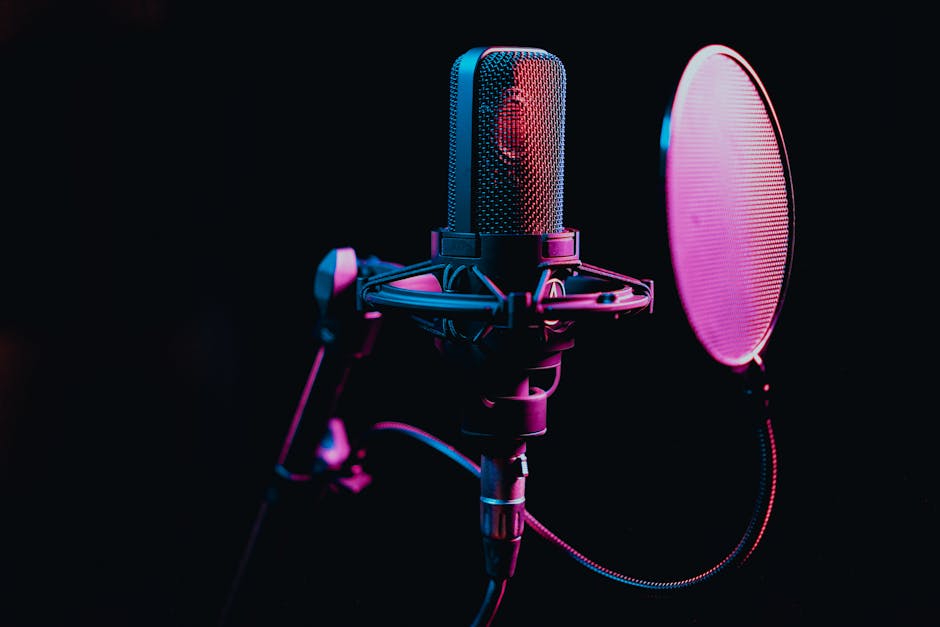The Impact of a Good Mixer on Managing Multiple Audio Inputs.
The Impact of a Good Mixer on Managing Multiple Audio Inputs
In the intricate world of audio, whether you’re orchestrating a live concert, recording a podcast, producing a studio album, or even just setting up a home streaming rig, you invariably face a common challenge: managing multiple audio inputs. Microphones, instruments, playback devices, computers – each source brings its own unique signal, volume, and character. Without a central command unit, these disparate elements can quickly descend into a cacophony. This is where a good audio mixer doesn’t just become helpful; it becomes absolutely indispensable, profoundly impacting the clarity, cohesion, and overall professionalism of your sound. It’s the critical bridge that transforms a collection of individual signals into a harmonious, controlled, and listenable output.
Beyond Just Combining: How a Mixer Transforms Disparate Inputs into a Cohesive Sonic Landscape
At its most basic, a mixer takes multiple audio signals and combines them. But a good mixer does so much more than simple summation. It’s about intelligently integrating each input so they complement, rather than clash with, one another. Imagine a band with a lead vocalist, a guitarist, a bassist, and a drummer. Each instrument and voice occupies a different sonic frequency range and has varying dynamic levels. A good mixer provides the granular control necessary to make each element heard distinctly within the collective sound, preventing any single input from overwhelming the others or getting lost in the mix.
The Foundation: Gain Staging and Impedance Matching
The first point of impact for a good mixer is at the very beginning of the signal chain: the input stage. Different microphones and instruments produce signals of varying strengths and impedances. A quality mixer offers robust preamps with sufficient gain to boost weak signals (like those from a condenser microphone) without introducing excessive noise, while also providing appropriate padding for hot signals (like a keyboard or direct instrument output). Proper Understanding Audio Gain Staging is crucial here; it ensures that each input enters the mixer at an optimal level, maximizing clarity and dynamic range while minimizing distortion and hiss. Furthermore, it correctly matches the impedance of the input source to the mixer, ensuring optimal signal transfer and frequency response.
Intelligent Routing and Sub-Mixing for Order
As the number of inputs grows, so does the potential for confusion. A good mixer provides flexible routing capabilities that allow you to group related inputs. For instance, you might route all drum microphones to a single sub-group, or all background vocals to another. This not only simplifies control by allowing you to adjust the overall level of an entire section with one fader but also enables you to apply processing (like compression or EQ) to the group as a whole. This organizational power is a cornerstone of managing complex audio setups, making the entire process far more intuitive and less prone to errors.
Sculpting Each Voice: Precision Control for Individual Audio Streams
Once signals are properly staged and routed, the true artistry of a good mixer comes into play: the ability to sculpt and refine each individual audio stream. This precision control is what elevates a raw collection of sounds into a polished, professional mix.
The Power of Equalization (EQ)
One of the most impactful features of any mixer is its equalization section. A good mixer provides responsive and musical EQ controls, allowing you to boost or cut specific frequency ranges for each input. This is vital for:

- Clarity: Removing muddy low-mids from a vocal or harsh highs from a cymbal.
- Separation: Carving out space for instruments that occupy similar frequency ranges, like a bass guitar and a kick drum, so they don’t mask each other.
- Tone Shaping: Enhancing the natural character of an instrument or voice, making it sound fuller, brighter, or warmer.
Without effective EQ, even the best recordings or live performances can sound muddled and unbalanced. A good mixer empowers you to address these issues with surgical precision, ensuring every input contributes positively to the overall sound.
Dynamics Processing for Consistency and Punch
Another crucial aspect of managing multiple inputs is controlling their dynamic range. A good mixer often includes or allows for easy integration of dynamics processors like compressors and gates. Compressors help to smooth out volume fluctuations, making a vocal more consistent or a bass guitar more solid in the mix. Gates, on the other hand, can eliminate unwanted background noise or bleed from other instruments when a particular input isn’t active. By applying these tools judiciously to individual channels, a good mixer ensures that all inputs maintain a consistent presence without sudden peaks or drops, adding punch and professionalism to the final output.
Auxiliary Sends for Effects and Monitoring
Beyond the main mix, a good mixer offers auxiliary (aux) sends, which are separate outputs from each channel. These are invaluable for two primary reasons:
- Effects Processing: You can send a portion of multiple input signals to external effects units (like reverb or delay processors) and then blend the wet (effected) signal back into the main mix. This allows for a single effect unit to be shared across many channels, creating a sense of space and cohesion within the mix.
- Monitor Mixes: In live sound, musicians often need their own custom mix of instruments in their stage monitors. A good mixer allows you to create several independent aux mixes, ensuring each performer hears exactly what they need to, which is critical for a tight and confident performance.
This ability to create parallel signal paths significantly enhances the flexibility and control over how individual inputs are presented both to the audience and to the performers themselves.
The Nerve Center: Streamlining Workflow and Mitigating Audio Headaches
A good mixer isn’t just about sound quality; it’s also about operational efficiency. In fast-paced environments like live events or complex recording sessions, a well-designed mixer acts as the nerve center, making the entire process smoother and more reliable.
Efficient Operation and Intuitive Layout
The physical or digital layout of a good mixer is designed for quick, intuitive access to critical controls. Clearly labeled faders, knobs, and buttons, often color-coded, allow engineers to make swift adjustments without fumbling. Features like mute groups, scene recall (on digital mixers), and assignable controls drastically reduce setup time and improve responsiveness during a performance or session. This efficiency directly translates to a better end result, as the engineer can focus on the sound rather than wrestling with the equipment.
Comprehensive Monitoring Capabilities
To effectively manage multiple inputs, an engineer needs to hear exactly what’s happening at every stage. A good mixer provides robust monitoring options, including:
- PFL (Pre-Fader Listen) / AFL (After-Fader Listen): Allowing the engineer to solo an individual channel through headphones without affecting the main mix, crucial for troubleshooting and setting gain levels.




Post Comment